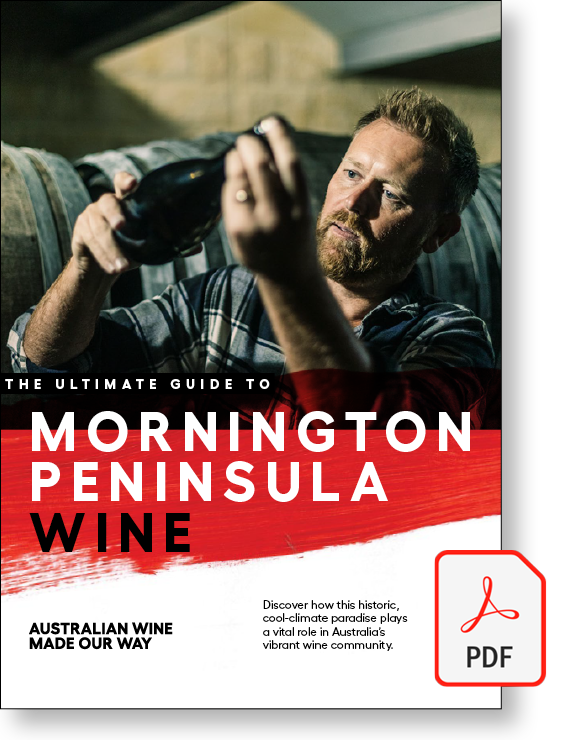Seaside wine playground
Drive just over an hour south of Melbourne and you’ll find the rolling green hills, beaches and seaside villages of the Mornington Peninsula. It’s a popular tourist spot that’s home to classic wines for the purists, for the adventurous and gourmet food experiences for everyone.
Grapes were first planted in the late 1800s, and in 1886 wine made with fruit from the region scored an honourable mention at the Intercontinental Exhibition in London. But the region’s rising star soon faded. Economic downturn in Victoria, trends favouring fortified wines over table wines and warmer climate regions took the spotlight. As a result, grape growing and winemaking was put on hold for nearly 80 years.
In the 1970s, a handful of winemaking pioneers brought new life to the Mornington Peninsula. Baillieu Myer, the son of Myer department store founder Sidney Myer, planted vines at Elgee Park Estate. A few years later, Nat and Rosalie White planted the region’s first Pinot Noir and Chardonnay vines and built the first commercial winery at Main Ridge Estate. Inspired by a visit to Burgundy, and noticing that the climate was similar, they planted an experimental vineyard of seven grape varieties in an old lemon orchard. They pressed their first grapes through a kitchen moulis (food mill) in 1979 and released their first commercial wines a year later.
Vines with ocean views
Holidaymakers love the Mornington Peninsula and it’s long been a popular weekend getaway. For the people who live and make wine here, the region is a lifelong infatuation. Tucked into the bottom of mainland eastern Australia, it’s surrounded by three bodies of water, which provide crisp, cool breezes and a long grape-growing season that builds intense yet elegant flavours. Its undulating landscape is a result of volcanic activity 60 million years ago, and faulting in the last 15 million years.
For a relatively small region, it’s surprisingly diverse, and differences in climate, altitude, topography, land and soil have created such varied microclimates that growers can distinguish between vineyards and even rows of vines.
Classics meet alternatives
The region’s diverse climate and soils are capable of growing a range of varieties including Pinot Noir, Chardonnay, Pinot Grigio/Gris and Shiraz. But Pinot Noir is the superstar. One of the world’s most difficult grapes to grow, it thrives in the Peninsula, where winemakers produce elegant, award-winning wines. Chardonnay is another hero variety, producing wines with delicate flavours of melon, white peach, citrus and fig.
These two varieties do so well that many wineries are happy to stick with them. But as in any Australian wine region, there is a focus on perfecting and fine tuning their winemaking techniques. This diversification owes much to winemaker Kathleen Quealy. She recognised that the cooler climate of the Mornington Peninsula was perfect for growing Pinot Grigio/Gris. In 1990, she launched T’Gallant winery with her husband Kevin McCarthy, and their Pinot Gris and Grigio wines became spectacularly popular, a skill they now bring to Quealy Wines.
In a relatively short time, the Peninsula has established itself as a premium wine region where winemakers craft classic Chardonnay and Pinot Noir in all manner of styles. But it’s also home to innovative makers exploring new varieties to create something unusual. For wine lovers, the Mornington Peninsula offers the best of both worlds.






